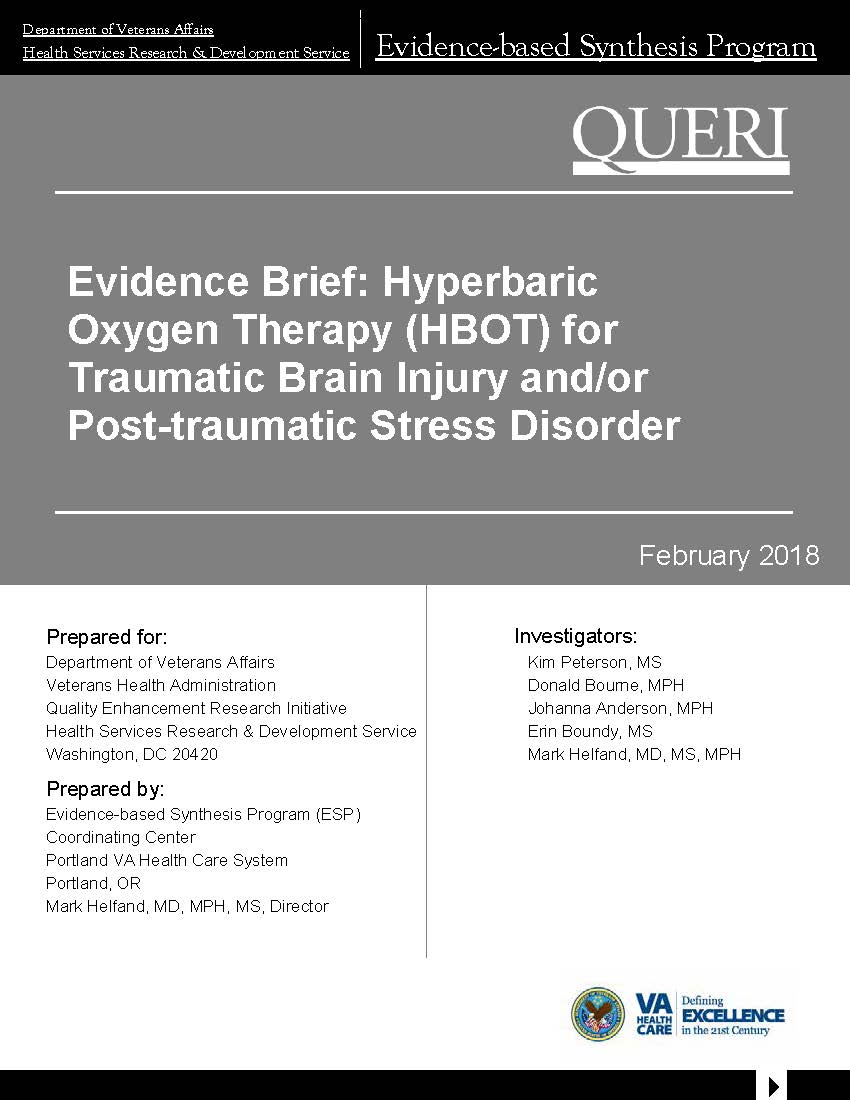
Investigators: Kim Peterson, MS; Donald Bourne, MPH; Johanna Anderson, MPH; Erin Boundy, MS; Mark Helfand, MD, MS, MPH
Download PDF: Brief, Supplemental Materials
The ESP Coordinating Center (ESP CC) is responding to a request from the Center for Compassionate Innovation (CCI) for an evidence brief on the use of hyperbaric oxygen therapy (HBOT) for the treatment of traumatic brain injury (TBI), posttraumatic stress disorder (PTSD), or their cooccurrence. Findings from this evidence brief will be used to inform considerations of clinical use of HBOT in Veterans with TBI and/or PTSD.
KQ1: What are the potential benefits of HBOT for the treatment of TBI and/or PTSD?
KQ2: What are the potential risks of using HBOT for the treatment of TBI and/or PTSD?
KQ3: Do the benefits or risks of HBOT differ per patient characteristics (eg, patient demographics, comorbidities, disease severity)?
KQ4: Do the benefits or risks of HBOT differ per treatment protocol (eg, number of sessions, amount of pressure, inpatient vs outpatient treatment)?